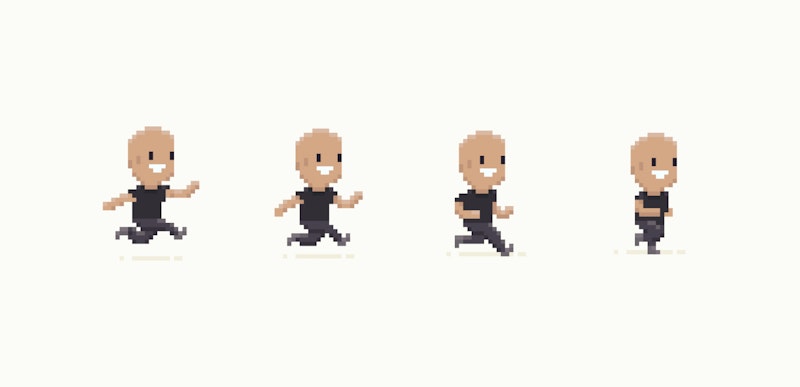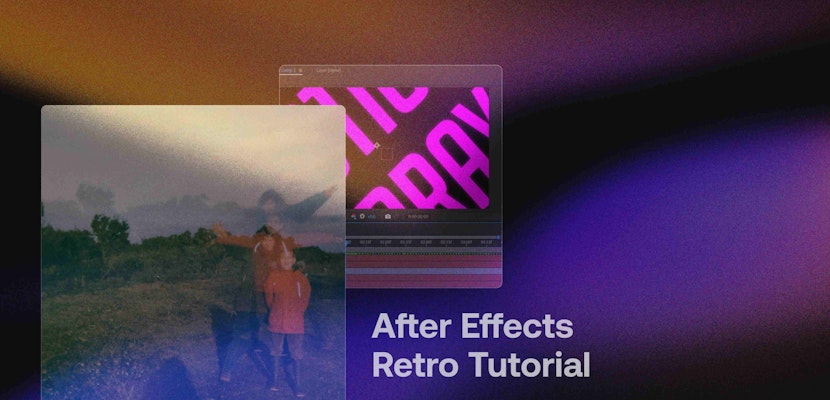We’ve talked a bit about After Effects character animation in the past. Like with our previous post called “5 Great 2D Character Rigging Tutorials For After Effects”. In that post, we showed some great resources for learning to rig characters for animation, but we didn’t focus too much on the tools themselves.
For this post, we are going to focus on the tools that you can use for your character animations. There are several tools available, including one bundled with After Effects. We’ll dig into what each tool offers to give you a better idea of what to use for your specific needs.
RubberHose 2
Rubber hose animation refers to the old technique of character animation dating back to the ’20s where characters appeared to have wobbly, rubber hoses for arms and legs.
We first discovered RubberHose when the original plug-in was introduced in 2015. In fact, we did a full post on it called “RubberHose Character Rigging Plug-In Review.” One of the things we loved about the original plug-in was the ease of use. The RubberHose engine was built to be simple without a ton of features bogging it down. It was really about animating points on shape layers with some cool built-in tools for making animations look good.
Now in its second iteration, RubberHose is more robust while maintaining its ease of use, which is a pretty good thing. New features allow for more control, flexibility, and speed.
RubberHose 2 comes with advanced hose styling. You can now get much more interesting body parts to work with. You can save out presets for later use, and you can attach your hoses to layers from Illustrator or Photoshop.
The new RubberRig and RubberPin features make it simple to animate your layers. RubberRig will create a rig from two layers centered in a comp with the push of a button. Think, two leg positions that you want to animate between.
All of the improvements add to what was probably already the easiest system for character animation in After Effects. And the plug-in comes in at just $45, which is a steal for anyone doing character animation on a regular or semi-regular basis.
DUIK
Currently in its 15th version, with the 16th iteration in development, DUIK is one of the most comprehensive character animation tools available for After Effects. It was originally created in 2008 as a basic animation tool, and over the years it has grown into one of the leading industry standards for character rigging and animation.
The last version was successfully crowdfunded, which allowed for more advanced development, and version 16 was just crowdfunded as well. You might be asking why crowdfunding is necessary, and that’s because DUIK is completely free for users. So, if you do find yourself using DUIK, consider donating to the developers or supporting their crowdfunding campaigns.
There is way too much inside of DUIK to cover here, but let’s go over some of the basics. DUIK features a reach menu of tools for rigging and animating characters. Some of these tools include Autorig, a feature that will automatically generate a simple rig for many characters. The Autorig includes joints for head, arms, and legs. You simply adjust the anchor points to fit your character and you are set.
Bones is a robust tool that replaces After Effects’ puppet pins with “bones” layers. These are useful for anyone used to rigging characters in 3D, as they act in a similar manner. DUIK version 15 also includes several dynamics animation controls for automating tedious animation controls.
DUIK is so deep in what it can do that the DUIK site features loads of tutorials and video courses. All of these are free as well. But, you can purchase the DUIK 15 User Guide in print form if you are more of a book reader.
If you are serious about getting into character rigging and animation in After Effects, you really have to give DUIK a spin.
Joysticks ‘n Sliders
While this plug-in sounds a bit like the name of an arcade and burger bar, it’s actually a very useful plug-in for character rigging and animation. Before we get into it, it should be noted that joysticks and sliders can also be useful for some other cool motion graphics animation outside of character animation.
Joysticks ‘n Sliders is not only a useful tool but also a fun one that makes animating a bit more like playing a game. The way the function of the joystick works is built around a set of poses. The user sets extreme poses for up, down, left, and right positions, then binds them to a “joystick”.
The joystick is just a control that will like you slide a point around in a box like a joystick. As the user does this, the plug-in interpolates between poses making for fluid character animation. Once you bind your elements, you can make a character lookup, them over to the left, and then back to center, by simply moving the joystick around the box.
The slider portion of the plugin is similar but based on a different type of layout. With sliders, a user can bind a set of pose positions and create a slider for each variation of the pose. The example the creators use is of hand animation. Each finger gets a pose with each finger bent and straight. Once bound, a slider is created for each finger, and the user can bend each finger individually to any range from fully bent to fully straight. And like the joystick function, the slider function is easy to understand and fun to work with.
The key to making Joysticks ‘n Sliders work best is to understand how to set up the rigs. Do yourself a favor and spend a little time on the tutorials before jumping in. Joysticks ‘n Sliders is available on aescripts.com for $39.95 and there is a free trial version if you want to give it a test drive, which you should do. You’ll find that this one can be quite a time saver for a lot of circumstances.
Puppet Tools 3
Puppet Tools is an After Effects script, not to be confused with the After Effects built in Puppet Tool. However, it’s named as such because it’s built to work with the After Effects feature and make it easier to use. Here’s how.
The After Effects Puppet Tool is a built in feature set for rigging characters. But it’s not the easiest thing to use, which is why there are several other tools available. Rather than ditch the AE Puppet Tool altogether, the maker of the Puppet Tools script, Greg Gunn, decided to make it more useful and easier to understand.
The biggest feature of Puppet Tools 3 is the Pins To Nulls feature. This takes AE Puppet Tool pins, that are buried in the layer drop downs and turns them into null layers. Each null layer can then be moved with it’s position control or by dragging the layer for easier animation.
Some additional options on the Pins To Null feature allow you to parent the nulls in order or create a master null for the others to be parented to. You can also adjust null sizes for your rig.
The newest version of Puppet Tools also features IK or inverse kinematics. Briefly, kinematics are the way in which your character’s joints react to each other. After Effects works with forward kinematics where a shoulder joint will move an elbow joint and an elbow joint will move a hand joint. But with inverse kinematics, the movement of the hand joint will also move the elbow and shoulder accordingly.
It just takes highlighting 3 joints and clicking a button to switch to inverse kinematics with Puppet Tools. Handy.
Like Joysticks ‘n Sliders, Puppet Tools 3 is available on aescripts.com. It’s $39.95 for the script and, while it may not seem to have as many features as the above tools, it’s an absolute must have if you are working with the built in After Effects Puppet Tool.
Adobe Character Animator
Adobe has been working for some time on their own character animation system designed to make character animation easier than ever. In that last several releases of AE, they’ve bundled in a preview version that you can play with. And in the latest After Effects release, they’ve included the Character Animator Beta. So, it’s just about ready for mass use, and potentially mass adoption amongst animators.
Character Animator makes use of facial recognition technology to let you animate a character’s face by miming movement into your webcam. First, you import your layers and set up a rig for your character using the built-in tools. Once your character is rigged, you can move appendages with mouse controls and you can animate the face with your own facial movements. You can then record those movements in real-time if you’d like.
Once you have a character animation you are happy with, you can export your character animation to After Effects, where the entire thing will be turned into keyframes in your timeline.
This new tool from Adobe is promising. It will probably take some time before people really learn how to maximize its use and there may even be more scripts and plug-ins from third-party vendors that make Character Animator better. But it does show Adobe’s commitment to pushing animation tools to their maximum potential, and it’s a great example of how technology continues to make our work more interesting and easier to accomplish.
Since Character Animator comes bundled with After Effects it doesn’t cost anything extra once you have an Adobe Creative Cloud subscription. A full Creative Cloud license is $49.99 a month, and a single license subscription for After Effects (with Character Animator) is $19.99 a month.
If you work in After Effects with any regularity, it’s probably a good idea to get familiar with character animation. Besides that, character animation can be a lot of fun. But it can also be a big pain, and all of the above tools take much of the pain out of the equation. Check them all out when you create your next character animation.



























